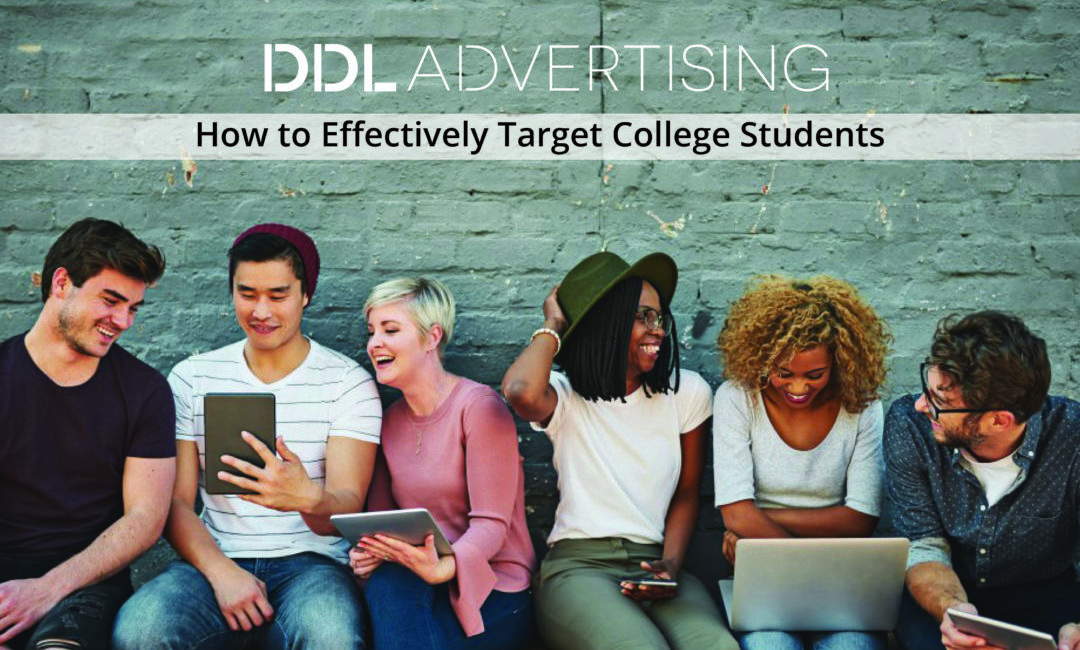Categorizing college students as Millennials has become an almost buzz word to describe this demographic. The age range for Millennials is still contested. However, it has been suggested that this generation consists of people who were born between 1977 and 1994. According to the US Census, college-aged students make up approximately ¼ of the US population with a total of 77 million people. Marketing to college students can be valuable as college campus’s carry a lot of influence both sociocultural and economically.
One environment that companies can effectively market towards is college campuses. The U.S. Department of Education reported that in fall 2017, some 20.4 million students are expected to attend American colleges and universities. Students graduating high school are now more likely to attend college, in fact since there were 2.4 million students enrolled in for-profit colleges in 2010. However, most companies typically do market to college students as they don’t regard college kids as an influential demographic when it comes to buying power. It’s ironic how the majority of college kids continuously complain about being broke yet have the potential to be one of the best demographics for purchasing power. In fact, more than 15 million U.S. college students spend more than $200 billion annually.
Source: Chegg/UM
But how do companies target this young, tech-savvy, diverse demographic? Current students are catching up to modern advertisers as they have been trained to ignore ads pretty much all their life. In fact, most millennials have some form of ad blockers installed on their web browser to block the noise and clutter coming from ads. Many companies fail to advertise efficiently to this young professional demographic. Even if you do grab their attention, how can companies market towards colllege students? Here are some tips to efficiently grasp the attention of college kids across America.
Make content for a connection
You may be reading this and say duh that’s obvious, but modern day companies need to be actively posting content and optimizing all the capabilities of social media. Having a Facebook page or Instagram account is a good start, but, your company needs to be active on these accounts. Companies should be posting every day, and these posts need to be engaging. Your target consumer spends a majority of their day on social media and can tell when your material is outdated. An old social media page may is worthless, as you lose interest and cannot connect with your target audience. There is no sense posting pictures just to post.
Choosing the right platform for social media
Social media is playing a huge role with 62% of millennials saying that if a brand engages with them on social networks, they are more likely to become a loyal customer. But how can your company create an active social media presence when you are not sure which platforms work best for your needs? It can be overwhelming at times. Think about the message that you are trying to send to support your strategy.
Source: ACCION
Some things to consider…
- If your goal is straight brand awareness, then you should consider a platform that is well-established with lots of users like Facebook as you can target a specific audience while still reaching a large number of eyes.
- If your goal is to connect with the young professionals of America, videos are a great tool to grasp attention and relate to this tech-savvy generation. Posting your video on Instagram or Snapchat can generate high levels of engagement.
- If your goal is to reach out to your consumers, Twitter is an excellent platform for communication. Students can reach out to your company, and you can reply back in a way that is relatable.
Free things
College kids LOVE free stuff, mainly because they are strapped for cash or too lazy to get out of their sweatpants and be in public. So take advantage of this.
One way to efficiently take advantage of this behavior is to offer some promotion. Not only does this give you high brand awareness, but it will give you a chance to connect with these young professionals.
Competitions for giveaways are usually done through social media which also can give you good content to post that is engaging. By using hashtags, you can gain a lot of interaction, and you can sift through that data to see what demographics are interacting with your social media postings. This also gives students a chance to shine, depending on the competition. Even a ‘shout out’ from a company show college student your brand characteristics.
Furthermore, this generation was brought up where they need instant gratification and continually being reminded that they are doing a good job. So recognizing this behavior is a great way to build trust with a company.


